Dr. Susan Kamel
Dr. Susan Kamel
Arabistin / Museologin
Projektleiterin
VW Tandem-Museumsprojekt
Freie Universität Berlin
Institut für Religionswissenschaft
Altensteinstr. 40
14195 Berlin
und
Institut für Museumsforschung (Staatliche Museen Preußischer Kulturbesitz)
In der Halde 1
14195 Berlin
Tel: +49 (030) 830-1542
Email: s.kamel (at) gmx.de
click here for english version
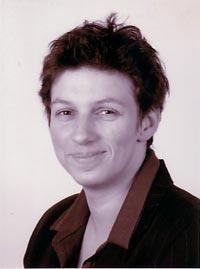
Biographisches
-
Museum Consultant für das Marib Museum Projekt. Verantwortlich für Konzept des Museums im Jemen.
-
Projektleitung VW-Tandem: „Vom Imperialmuseum zum Kommunikationszentrum? Zur neuen Rolle des Museums als Schnittstelle zwischen Wissenschaft und nicht-westlichen Gesellschaften“
-
Werkvertrag für die Antragstellung eines Ausstellungskonzeptes „Besonders Alltäglich – Alltäglich Besonders. Jugend in Neukölln. 8. September - 15. Oktober 2007. Museen Dahlem, Ethnologisches Museum
-
Museumsassistentin in Fortbildung am Ethnologischen Museum zu Berlin. Fachreferate Amerikanische Archäologie und Islamischer Orient
-
Davor praktische Tätigkeiten am Museum für Islamische Kunst Berlin und dem Museum Europäischer Kulturen Berlin. Wissenschaftliche Betreuung der Sammlungen, Betreuung der Sammlungsverwaltung und Restaurierungsarbeiten, Erarbeiten von Ausstellungskonzepten und deren museumspädagogischer Betreuung.
-
Langjährige Erfahrung in der Besucherforschung am Institut für Museumskunde Berlin. Organisation, Durchführung, Auswertung und Veröffentlichung von Besucherumfragen.
-
Neue Erschließung der islamischen Sammlung in Berlin mittels einer Serie in der tageszeitung vom 28.1.2002-4.3.2002.
-
Entwicklung ungewohnter Wege zur Einbindung von Museen in die Öffentlichkeit. Hierfür Kooperation mit lokalen (Ziel-)Gruppen; Verbindung von Wahrnehmungsräumen Kunst- und kulturhistorischer Museen.
-
Dissertationsthema: “Black Kaaba meets White Cube. Wege zur Vermittlung von Religionen in Berliner Museen“. (Arbeit an der Schnittstelle von Museum, Vermittlung, Kunst und Kultur.) Note: Summa cum laude.
-
Studium der Religionswissenschaft, Arabistik und Tibetologie in Göttingen, Derby (GB) und Berlin. Spezialgebiete: Islamische Kulturen, Tibetische Kulturen, Religion und Geschlecht, Wissenschaftsgeschichte, Berliner Museumsgeschichte.
-
Führungstätigkeiten am Museum für Islamische Kunst Berlin. Dozentin an Volkshochschule und Hochschule. Langjährige Erfahrung in der multimedialen Bildungsarbeit von Jugendlichen und (älteren) Erwachsenen. Organisation und Durchführung von nationalen und internationalen Symposien.
-
Mitarbeit an einer interkulturellen Begegnung von Kunst und Wissenschaft im Rahmen der Internationalen Frauenuniversität (ifu) Hannover (Projekt: Migration).
Fotos aus dem aktuellen Forschungsprojekt
Publikationen
In Vorbereitung
The Making of Islam. Über das Kuratieren islamischer Kunst und Kulturgeschichte in Ägypten (Arbeitstitel): In: Broeck, S.; Quintern, D.; Paulus, V. (Hg.): Exotismus und Nostalgie. Interdisziplinäre Beiträge zur okzidentalen Nostalgie (Arbeitstitel). Sammelband zur Tagung Der Orient in Bild- und Museumssprache, Literatur und Geschichtsdenken. (2008_kamel-the_making_of_islam.pdf)
In Vorbereitung
Zusammen mit Christine Gerbich: Visitor Behavior at Sanaa National Museum. A research in Middle Eastern Museum Studies. In: Archäologische Forschungen im Jemen.
In Vorbereitung
Zusammen mit Christine Gerbich: „L’amour de l’art“ in the Middle East. Some Remarks on Visitors in Egyptian museums.
Im Druck
Religiöse Erfahrung oder ästhetische Erfahrung? Versuch gegen jegliche Unmittelbarkeitsemphase bei der Kunstbetrachtung. In: Schöne, Anja (Hg.): Tagungsband „Dinge – Räume – Zeiten. Religion und Frömmigkeit als Ausstellungsthema“ (Arbeitstitel). 17. DGV- Tagung der Arbeitsgruppe Sachkulturforschung und Museum. 4. - 6. Oktober 2006. (2008_religioese_oderaesthetsche_erfahrungen.pdf)
2007
The Ethnographer as Artist: The Presentation of Art and Ethnography in Museums. In: Manuela Fischer, Peter Bolz, Susan Kamel (eds.): Adolf Bastian and his universal archive of humanity. The origins of German Anthropology. Olms Verlag. Hildesheim. S. 267-275.
2007
Zusammen mit Christine Gerbich: Marib Museum Project. Report on Visitor Research and Evaluation at Sanaa National Museum. October and December 2007. Unveröffentlichter Bericht.
2007
Zusammen mit Manuela Fischer, Peter Bolz (eds.): Adolf Bastian and his universal archive of humanity. The origins of German Anthropology. Olms Verlag. Hildesheim. (www.olms.de)
2005
Zusammen mit P. Bolz und M. Fischer: Dem Vater der Berliner Ethnologie zum 100. Todestag. In: Museumsjournal. S. 66-67. I. Quartal.
2005
Rezension zu: Piegeler, Hildegard, Prohl, Inken, Rademacher, Stefan (Hg.): Gelebte Religionen. Festschrift für Hartmut Zinser. Würzburg 2004. In: Paideuma. Mitteilungen zur Kulturkunde. Frankfurt am Main.
I. Quartal 2005
Dem Vater der Berliner Ethnologie zum 100. Todestag. . In: Museumsjournal. S. 66-67. Zusammen mit P. Bolz und M. Fischer.
2004
Hamidas Lied. Die 100 Jahre einer Muslimin an der Spree. In: Kröger, Jens (Hg.): Islamische Kunst in Berliner Sammlungen. S. 180-186. (2004_hamidas_lied.pdf)
2004
Museen als Agenten Gottes oder „0:0 Unentschieden“? In: Bräunlein, Peter J. (Hg.): Religion und Museum. Zur visuellen Repräsentation von Religion/en im öffentlichen Raum. S. 97-118.
2004
Wege zur Vermittlung von Religionen in Berliner Museen. Black Kaaba Meets White Cube. Wiesbaden.
2003
Eine religionskundliche Ausstellung für Berlin. In: Lanwerd, Susanne (Hg.): Der Kanon und die Sinne. Religionsästhetik als akademische Disziplin. S. 181-187.
2003
Der tibetische Buddhismus. In: Rademacher, Grübel (Hg.): Religion in Berlin. Berlin 2003. S. 469-471.
2002
Mythos und Kunst. In: Betz, Browning, Janowski, Jüngel (Hg.): Religion in Geschichte und Gegenwart. 4. Auflage. Bd. 5. :L-M. Tübingen. S. 1687-1688.
28.1. - 4.3. 2002
6teilige Serie zum Thema „Islam und Kunst“. Erschienen in der tageszeitung. Intertaz, S. 14
Gemeinsame Publikationen zum Projekt
In Vorbereitung
Zusammen mit Guzy und Hatoum: Museum und Globalisierung: Perspektiven aus Nordamerika, Indien und der Arabischen Welt. In: Jebens, H.; Kohl, K.-H.; Platte, E. (Hg.): Paideuma. Mitteilungen zur Kulturkunde. No. 55.
2007
Gemeinsam mit Guzy, Lidia; Hatoum, Rainer: Vom Imperialmuseum zum Kommunikationszentrum. Zur neuen Rolle des Museums als Schnittstelle zwischen Wissenschaft und nicht-westlichen Gesellschaften, in ICOM Deutschland Mitteilungen. S. 57.
2006
Guzy, Lidia, Rainer Hatoum und Susan Kamel: Vom Imperialmuseum zum Kommunikationszentrum? Zur neuen Rolle des Museums als Schnittstelle zwischen Wissenschaft und nicht-westlichen Gesellschaften – Ein von der VolkswagenStiftung finanziertes Gemeinschaftsprojekt der Staatlichen Museen zu Berlin und der Freien Universität Berlin. Baesseler 53: 208 – 214.
Berichte über das Projekt
2008
Vom Imperialmuseum zum Kommunikationszentrum - Impulse für die Museumslandschaft in Deutschland? Zwei Wissenschaftlerinnen und ein Wissenschaftler auf der Suche nach neuen Wegen. in: Impulse für die Wissenschaft 2008, Forschungsmagazin der Volkswagenstiftung. (www.volkswagenstiftung.de)
Promotionsschrift
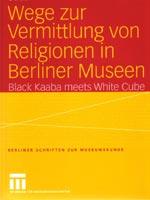 Wiesbaden. 2004
Wiesbaden. 2004
Abstract:
Black Kaaba Meets White Cube.
Towards Communicating Religions in the Museums of Berlin
“The world religions will have to offer means to change the consciousness in the 21st century – or they will end up in a museum.” Michael von Brueck
Does a collection about religion necessarily mean a memorial to that religion, as the theologian Michael von Brueck suggests, or can museums also be places of communication on religions? Could museums be arenas for arguments that would lead to wars outside, in the “real world”?
Museums are on their way to becoming living institutions that function through their intervention in society. Places for encounters with foreign, non-familiar worlds. They are spaces to perceive the aesthetics and semantics of an object; they offer both, enjoyment and education. Museums have become increasingly important as places to study religions, as it is still not decided yet whether globalisation and migration will lead to what Homi K. Bhabha calls “hybrid forms of identities” or to the so-called “clash of civilisation” as described by Samuel Huntington. Therefore we have to demand commitment, in every respect, to prevent the possibility of wars between different modes of perception.
The aim of my thesis is to analyse different ways of presenting religions in museums and to find out what images of religions are created through these presentations. Exhibitions can help visitors to critically encounter a religion as a system of symbols amongst others or otherwise they risk hindering visitors understanding of religions as socially constructed, fostering a perspective of them as ‘essential’.
A formal aesthetic way of presentation, the so called “white cube” (Brian O’Doherty), tries to force an identification between aesthetic and religious experience. As such both experiences are thought to be unmediated and untouched by time and place. Both, the aesthete and the believer seem to be gifted; the former in an aesthetic sense, the latter in a religious sense. Experience, in this discourse, seems to be a direct encounter with the numinous, the holy or beauty. The means of presentation can be seen to promote either a substantial or a constructed definition of religion.
The first part of my paper explores three different discourses: The history of museums, the history of communication studies and the history of religious studies. I have introduced ideal typical coordinates, such as art vs. historical museums; linear vs. constructivist communication; a formal aesthetic model of communication in the museum vs. a cultural model of communication in the museum; and a substantial definition of religion (in the singular) vs. a constructivist definition of religions (in the plural) as a system of signs.
In the second part I analysed three museums along these theoretical lines: an art museum, a cultural historical museum and a museum specialising in the diversity of religious material culture. My work focused on Islam in particular, because of my biographical background, my education in Islamic Studies and the importance of Islam in present-day political discourses. I therefore chose the Museum of Islamic Art in Berlin, the Museum of European Cultures in Berlin and compared them with the unique St Mungo Museum of Religious Life and Art in Glasgow.
„The belief in one God is in the centre of Islam“ Museum of Islamic Art, Berlin
The history of the Museum of Islamic Art in Berlin and its location on the central museum island, designed to house only high culture, reflects the transformation of Non- European low culture. Imperialism and Orientalism both fostered the increase of Islamic Art History in Europe at the end of the 19th century.
The means of communicating Islamic Art employed by the museum serves to illustrate the history of artistic developments from the 7th to the 19th century. However the museum does not question the naming “Islamic Art” an event that reflects the impact of 19th century scholarship of the Orient. The exhibition therefore seems to promote an idea of an essential, ‘other’ Islam.
The leaflet in the museum on the religion of Islam takes a phenomenological perspective as the phrase “The belief in one God is in the centre of Islam” shows.
“Islam is a religion of the word” Museum of European Cultures, Berlin
The second museum I analysed was the anthropological Museum of European Cultures, opened in 1999 as a successor of the former ”Museum für deutsche Volkskunde Berlin”. This collection presents a thematic section called “Bilder in den Religionen” (“pictures in religions). Although the museum aims to be a “forum for integration” it presents five different religions or denominations (Judaism, Islam, Catholicism, Protestantism and Orthodoxy) in a traditional, formal aesthetic way. The ambition of the museum is to show the diversity and unity of different religions. However it seems on the contrary to represent the unity in the diversity of religions thereby reflecting the impact of phenomenological approaches to religion. These can be traced through texts such as Friedrich Heiler’s important book for the study of religions “Erscheinungsformen und Wesen der Religionen” (Phenomenon and the Essence of Religions). Even the design and architecture of the section “pictures in religions” support this approach: The visitor circumcises a pillar in the middle of the room, on which pages of the five Holy Scriptures are attached. In this he resembles a muslim pilgrim who circumcises the Kaaba in Mecca and in doing so constructs an ahistorical centre to its account of Islam.
Both museums in Berlin present a foreign, non-familiar Islamic Culture as art in a formal aesthetic mode. But neither of these museums includes contemporary art, for example which may serve to show the transfer of religious language into non-religious contexts. For both museums in Berlin I was able to demonstrate that a formal aesthetic mode of presentation constructs a phenomenological definition of religion (in the singular). Neither of the museums in Berlin tries to engage with local Islamic Culture. They stick to the idea that Islam or Muslim belief as foreign and do not try to communicate with this foreign culture.
“Islam means submission to God” St Mungo Museum, Glasgow
The third museum to which I applied my method was The St Mungo Museum of Religious Life and Art in Glasgow. It has a three way approach to its collection: via the aesthetic, the international and the local. The last two can be described as cultural-historical displays within an international and then a local context. The St Mungo Museum offers a critical concept – as does the Museum of European Cultures in Berlin – but it also realizes a constructivist model of communication through aiming to intervene in society. It provides access to religious phenomenon on varous levels, employing the visitors as active meaning makers through consulting with various religious communities, even during the process of designing the exhibition. What is more this interaction with public is ongoing. Only the first gallery, the Gallery of Religious Art can be criticized for lacking a cultural-historical context, and hence results in a problematic formal aesthetic presentation of its art collection. In this gallery we even find a phenomenological approach to art and religion made explicit by a Muslim artist through claims that “art is the search for the divine”. In this display Art appears to be timeless and universal, to be the new, real religion.
My paper concludes with proposals for special exhibitions at both the Museum of Islamic Art in Berlin and the Museum of European Cultures in Berlin. The proposals were developed in consultation with the museums and one is due to be realised at the jubilee exhibition of the Museum of Islamic Art in 2004.
“Black Kaaba meets White Cube. Towards Communicating Religions in the Museums of Berlin”– explores different ways of presenting religions in museums and represents my personal itinerary for curatorial work.
Ausstellungen
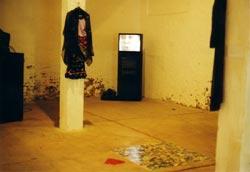 Look back, look forward.
Look back, look forward.
Eisfabrik Hannover. 3.-8.10.2000. Projekt: Believe it or not!
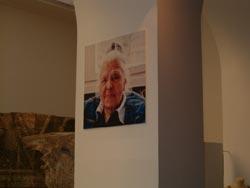 Hamidas Lied. Die 100 Jahre einer Muslimin in der Spree.
Hamidas Lied. Die 100 Jahre einer Muslimin in der Spree.
Museum für Islamische Kunst Berlin. 18.10.2004-19.1.2005.
Relevante Publikation: Susan Kamel, Hamidas Lied. Die 100 Jahre einer Muslimin an der Spree. In: Kröger, Jens (Hg.): Islamische Kunst in Berliner Sammlungen. S. 180-186. Berlin 2004.
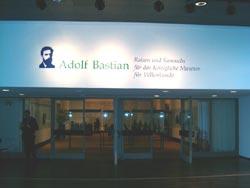 Adolf Bastians Erbe im Ethnologischen Museum. Reisen und Sammeln für das Königliche Museum für Völkerkunde.
Adolf Bastians Erbe im Ethnologischen Museum. Reisen und Sammeln für das Königliche Museum für Völkerkunde.
Ethnologisches Museum Berlin. 25.2.-22.5.2005.
Relevante Publikation: Dem Vater der Berliner Ethnologie zum 100. Todestag. In: Museumsjournal. S. 66-67. I. Quartal 2005. Zusammen mit P. Bolz und M. Fischer.
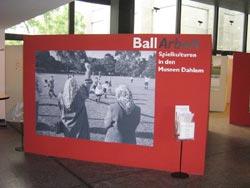 BallArbeit. Spielkulturen in den Museen Dahlem.
BallArbeit. Spielkulturen in den Museen Dahlem.
Museen Dahlem verlängert bis 10.9.2006




